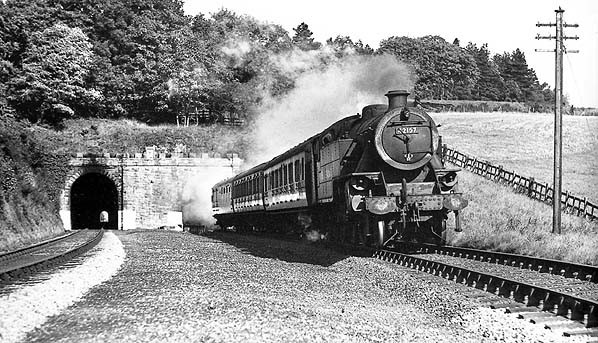
Vaynol Tunnel[Source:Les Fifoot & Paul Wright]
 The southern portals of the Vaynol tunnel seen on 4 October 1952. The 11.20am Bangor to Pwllheli service had just passed through the 1871 bore. The train was being hauled by locomotive number 42157 which was built by the fledgling British Railways in July 1948 at Derby Works, this Fairburn designed 2-6-4 tank had a working life of only 15 years when it was withdrawn from 2F, Woodford Halse on 20 July 1963. It was cut up that November at Crewe works. A class of 277 locos, they were a Fairburn development of the Stanier design and two of these locos are preserved, 42073 and 42085.
Photo by Bill Rear 
|
.jpg)

 Home Page
Home Page